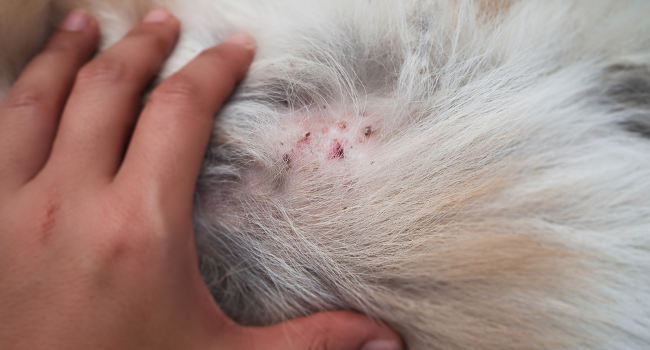What Is Walking Dandruff In Dogs
As a pet owner, nothing can be more distressing than discovering that your furry friend is suffering from a skin condition. One such condition that can affect any pet is Cheyletiella, commonly known as walking dandruff. Yes, you read that right! Walking dandruff is a parasitic skin condition that can affect dogs, cats, and even humans.
Cheyletiella- The Culprit Behind Walking Dandruff
Cheyletiella is a species of mites that feed on the keratin layer of the skin. These mites are only visible under a microscope and can reproduce rapidly. When they die, they turn into dandruff-like flakes that continuously move around, giving it the name "walking dandruff." These flakes can also be easily transferred to other animals and humans.
Symptoms of Walking Dandruff in Dogs
Walking dandruff usually manifests itself in the form of dandruff or flakes on the skin of your furry friend. However, the condition is more severe in some cases, and it can cause intense itching, hair loss, and even skin infections. Some of the common symptoms of walking dandruff in dogs are:
- Flaky skin and dandruff
- Intense itching
- Hair loss
- Redness and inflammation of the skin
- Lesions and scabs
- Bumps or lumps on the skin
Treating Walking Dandruff in Dogs
If you suspect that your furry friend is suffering from walking dandruff, it is essential to take them to the vet immediately. Your vet may perform skin scrapings and examine them under a microscope to determine whether your pet has Cheyletiella. Treatment usually involves using antiparasitic medications such as ivermectin, selamectin, or fipronil. The medications can be given orally, topically, or as an injection, depending on the severity of the condition and the type of pet. However, it is crucial to follow the vet's instructions and complete the full course of treatment.
Preventing Walking Dandruff in Dogs
Preventing walking dandruff is relatively simple if you follow some basic pet hygiene practices. Here are some tips to prevent walking dandruff in dogs:
- Regularly groom your pet using a flea comb and a brush to remove any loose hair and dead skin cells.
- Bathe your pet with a hypoallergenic shampoo that is specifically formulated for dogs. Avoid using harsh chemicals that can irritate the skin.
- Clean and disinfect the areas where your pet spends most of their time, such as their bed and toys.
- Treat your home and yard with insecticides to eliminate any potential sources of infestation.
Conclusion
Walking dandruff may sound like a harmless condition, but it can cause significant discomfort and even lead to skin infections in pets. Prevention is always better than cure, and following basic pet hygiene practices can go a long way in preventing walking dandruff. If you suspect that your furry friend is suffering from walking dandruff, take them to the vet immediately. Early diagnosis and treatment can help prevent the condition from worsening and affecting other pets and even humans in the household.
References
Here are some resources for more information on walking dandruff:

